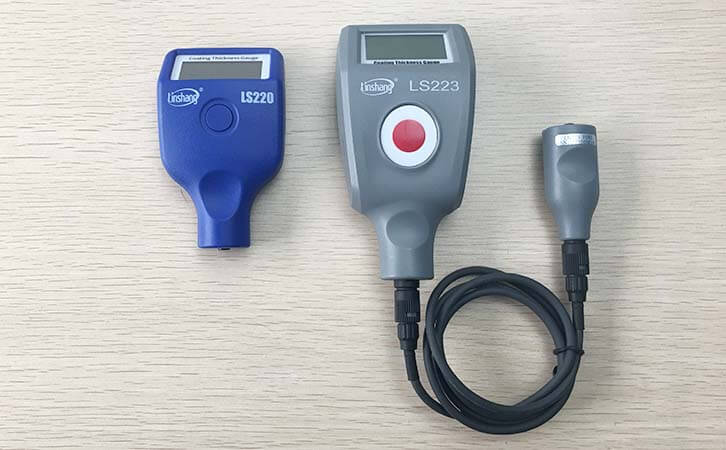Application of Coating Thickness Gauge in Various Industries
Coating thickness gauges are used to measure the thickness of various coatings and can be used in many industries. Below we use examples to illustrate the application of coating thickness gauges in various industries.
1. Application of coating thickness gauge in shipbuilding industry
The application of the coating thickness gauge in the shipbuilding industry is mainly reflected in the anticorrosive coating of ships. Ships are often used in rivers, lakes and seas. In particular, the corrosion of seawater is particularly strong. The hull of a ship is particularly vulnerable to corrosion if its anti-corrosion coating is not up to standard. Ships are relatively special, with high requirements for anticorrosion on the outside of the hull and high requirements on fire protection inside the hull.
The thickness of anti-corrosion coatings on ships is generally required to be 320 μm (high-quality anti-corrosion coatings), the thickness of fire-resistant coatings is generally required to be 1-2 mm and the fire resistance time can reach 0.5-1.5 hours. Therefore, in the shipbuilding industry, we often use coating thickness gauges, which are mainly used to detect whether the thickness of fire-resistant coatings or anti-corrosion coatings of ships has reached the standard. Avoid certain safety risks caused by the non-standard coating thickness of the ship.
2. Application of coating thickness gauge in electrophoretic paint industry
Electrophoretic paint is a kind of hydrolytic coating film, which is to put conductive paint in a container with water. Then turn the current-carrying end of the water tank to the cathode and anode to place the coating in the water tank. After being energized, the coated objects in the water tank will be evenly and finely distributed on the coated objects. The coating thickness of electrophoretic paint is generally between 15-25 μm and the thickness of thick coating is generally between 20-25 μm. If the coating is too thick or too thin, it will affect the coating performance of the electrophoretic paint, so we will use a coating thickness gauge to detect the coating thickness of the electrophoretic paint.
3. Application of coating thickness gauge in aircraft fireproof coating
Once the aircraft catches fire, it will have unpredictable consequences and directly threaten our lives. Therefore, fire-resistant coatings are now used on aircraft. Due to the stricter weight control on aircraft, intumescent fire-resistant coatings are often used. Fire-resistant coatings are mainly divided into two types, thick coating type and intumescent type. The former mainly depends on the coating thickness to prevent fire. Although an excessively thick coating can prevent fire, it will increase the weight of the aircraft body and an excessively thick coating is more likely to fall off.
The intumescent fire-resistant coating is mainly used to protect the body from the fire by expanding a lot of small holes after being exposed to high temperature. Fire protection coatings on aircraft generally require a primer and the coating thickness is 0.8mm. Coatings that are too thick or too thin can affect the performance of fire-resistant coatings. Therefore, we generally use coating thickness gauges to check the thickness of fire-resistant coatings on aircraft to see if they meet standards.
4. Use Linshang coating thickness gauge to measure the thickness of various coatings
It is recommended to use Linshang LS220H coating thickness gauge for measuring thin coating of electrophoretic paint. For some anti-corrosion or fire-resistant coatings, Linshang LS223 coating thickness gaugeis recommended. LS223 coating thickness gauge is a coating thickness gauge with wide measurement range. The Linshang coating thickness gauge uses a magnetic method and an eddy current method to measure the thickness of a non-magnetic coating on a magnetic substrate and the thickness of a non-conductive coating on a non-magnetic metal substrate. There is a separate design of the probe and the host. And the integrated design of the probe and the host is convenient for measurement.
- High precision coating thickness gauge for used car
- Automotive paint protection films coating thickness gauge
- Plating Thickness Measuring Instrument for Detecting Anti-corrosion Coating
- Linshang LS220, LS191, LS160A– Necessary for Car Cover Inspection
- Coating Thickness Gauge for Second Hand Vehicle
- Zero Adjustment Step of Coating Thickness Gauge
